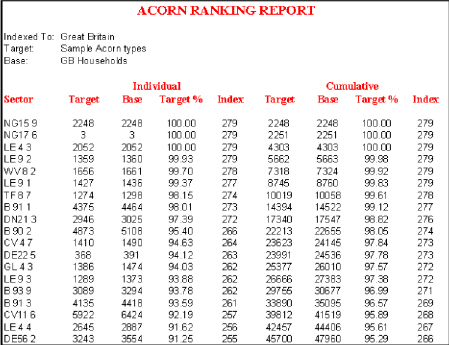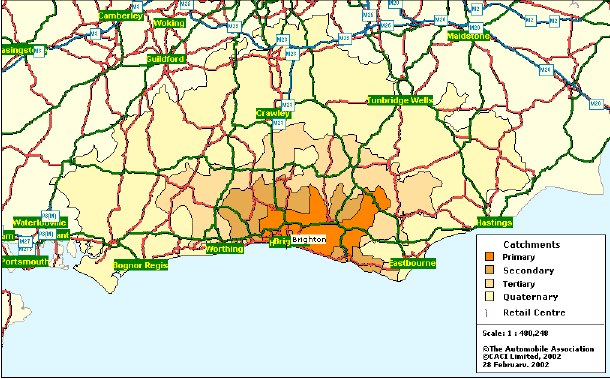The Leaflet Company use a range of CACI targeting datasets and customised models to ensure that client's door drops are optimising reach of preferred target audience, both geographically and demographically.
Most door drops are targeted at postcode sectors and ACORN has been a proven discriminator at this geographic level.Client's existing customer data can be profiled against ACORN types and then door drop campaigns targeted towards postcode sectors with the highest penetration of their Acorn target audience.
With the release of CACI's new ACORN classification, which combines lifestyle data with census data, the dataset has been strengthened.This has enabled correct identification of ACORN types that accurately reflect the target audience the door drop is aiming to reach.

For many national retailers, door drops form a significant percentage of their marketing mix.Campaign schedules are planned to ensure a unique catchment for each individual store and that each postcode sector due to receive the leaflet is easily accessible to the store location.This level of geographic planning is facilitated by the use of CACI's Retail Footprint and is utilised by many high street retailers for door drops.
Retail Footprint is a sophisticated model that takes catchment analysis beyond drivetime or radii.The model represents real-life shopping flows to every high street shopping location in the UK.The model is segmented by postcode sector, therefore making it an ideal tool for door to door, and each high street catchment is further split into primary, secondary, tertiary & quaternary catchments.These are based around postcode sectors and represent % shopping flows to a particular centre e.g.Primary catchment represents 50% of all shoppers to that location.This sub-catchment analysis allows door drop campaigns to be tailored to individual clients tactical or strategic targeting requirements.
An example of this is where a client wishes to target all customers within easy reach of the store, but additionally include as many high value potential customers that visit the shopping centre less frequently.In this circumstance, the door drop can be planned selecting the full primary catchment for each store, and selected postcode sectors from the secondary catchment that have a high percentage of potential high value customers.

Map showing Retail Footprint catchments around Brighton.
Nicky Want, Planning & Strategy Director at The Leaflet Company, says "CACI's Retail Footprint and other gravity models have been integral to the planning team at The Leaflet Company, and combined with the re-launched version of Acorn, they have provided a powerful and effective model for door drop success."